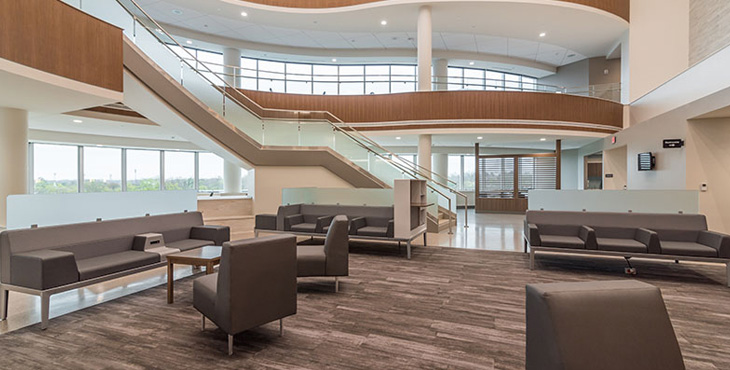Critical Care

About
When you or a loved one face a life-threatening medical condition due to illness or injury, Spartanburg Regional Healthcare System’s highly skilled critical care professionals are there to provide treatment and comfort. These patients are cared for in an intensive care unit (ICU).
Spartanburg Regional Healthcare System’s main campus is home to four intensive care units:
- The Medical ICU, a 24-bed unit in the Critical Care Pavilion.
- The Surgical Trauma ICU, a 22-bed unit in the Critical Care Pavilion.
- Cardiovascular Recovery Unit (CVRU), a 10-bed unit in the Heart Center.
- Coronary Care Unit (CCU), a 10-bed unit in the Heart Center.
If you or a family member require specialized care, teams in any of the ICUs are there to provide care and comfort around the clock. A multidisciplinary team that includes a physician, bedside nurse, pharmacist, dietician, respiratory therapist, case manager and charge nurse delivers care. The team meets each morning to plan the patient’s day and discuss any changes or any needs for the family.
The nurse-to-patient ratio in the ICUs is typically 1:2, although it can be 1:1 for the most critical patients. Charting stations inside and outside of every room allow nurses to stay close to patients. The critical care rooms are larger to better accommodate visiting family members, state-of-the-art medical equipment and lifts to assist nurses in moving patients.
Medical ICU – Pavilion 4
Common conditions treated in the medical ICU include everything from COVID, COPD, influenza and pneumonia to drug overdoses, multi-organ failure, end-stage renal failure, sepsis and strokes, to name just a few.
The spacious rooms allow for bedside procedures such as X-rays, transfusions and dialysis – including continuous renal replacement therapy (CRRT), which is gentle dialysis for patients who don’t tolerate traditional dialysis. For CRRT, the nurse-to-patient ratio is typically 1:1.
Surgical Trauma ICU – Pavilion 5
Patients who have undergone complex surgical procedures or who have suffered traumatic injuries following a fall or motor vehicle accident receive care in the surgical trauma ICU.
In addition to computers, rooms are equipped with a boom that accommodates regulators for oxygen flow and has a variety of electrical outlets for needed hardware, such as ventilators or blood clot prevention equipment. Dialysis, transfusions, X-rays and some surgical procedures can be performed at the bedside as needed.
Cardiovascular Recovery Unit (CVRU)
The CVRU is for patients immediately after open heart, lung and vascular surgery. Through enhanced recovery after surgery, patients can rapidly progress through stages of recovery and potentially be out of bed on the same day of surgery. Patients with severe respiratory or heart failure that don’t respond to usual treatment can be treated with an extracorporeal membrane oxygenation (ECMO) machine. ECMO is a life-saving treatment that pulls blood out of the body, oxygenates it and pushes it back into the body to do the work of the heart and lungs. The hospital has four ECMO machines, with one serving as a backup at all times, and a team of highly trained physicians, nurses and respiratory therapists that provide care and support. ECMO treatment can last up to several months.
Coronary Care Unit (CCU)
Critically ill patients who have suffered severe heart attacks and other serious conditions are treated in the CCU. Patients in the CCU run the gamut from those who received a stent to open clogged vessels and will be going home in a matter of days, to those whose hearts are failing, needing advanced devices that support the work of the heart and everything in between.
Step-Down Units
Patients who no longer need critical care but are not stable enough to move to a regular patient room are placed in a step-down unit. The nurse-to-patient ratio in a step-down unit is 1:4. Step-down units are in the Critical Care Pavilion, the Heart Center and the main hospital.
Care Partners
A care partner is a family member or friend selected by the patient or patient’s next of kin. The partner participates in the emotional, physical, educational and spiritual support of the patient. The care partner also is the only person who will receive information about the patient, to allow the nurse to communicate efficiently and spend more time with the patient. The care partner will then share the information with other family members and friends.
Visitors
Spartanburg Regional knows how important it is for patients to have the support of family and friends during their stay. No more than two visitors are allowed at a time, and visitors are asked to restrict their visits to 10-15 minutes to give the patient time to rest and the team to administer care.
Visiting hours are:
- 8 - 11:30 a.m.
- 1:30 - 6 p.m.
- 8 - 9 p.m.














